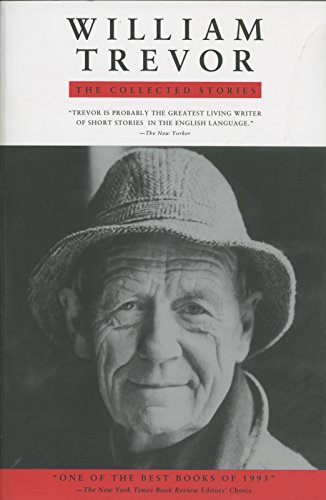“Afternoon Dancing” tells the story of two lifelong friends, Alice and Poppy. Alice, the main character, is matronly and diffident and unconfident. Poppy is petite and loud and fun. Both women are married to agreeable dull men; both women have children. At 54 years of age, and at Poppy’s behest, the women take up dancing in the afternoons at a dancehall in Tottenham Court, which is where they meet a younger Jamaican man named Grantly Palmer. The three become friends—Poppy kids Alice that Grantly is sweet on her—and they maintain a routine of meeting to dance every Tuesday for quite some time, until Poppy dies. After her friend’s death, Alice stops dancing, but eventually begins thinking of Grantly, and so returns secretly to the dancehall (these excursions were always a secret between the women) and informs Grantly of Poppy’s death. Grantly makes a pass at Alice and professes his desire for her, and when he is rebuffed, he angrily tells her he is a pervert who only wants to sleep with larger, older (“over sixty, if it’s possible”) white women. The story concludes with Alice, in a moment of weird grace, considering what it would be like to submit to Grantly’s advances and thinking about how he shouldn’t feel ashamed of himself—how no one should be ashamed of themselves—before leaving the club in shame.
I have two strong feelings about this story, in different directions. The first is that “Afternoon Dancing” does something I wish more stories did these days, which is to patiently tell the reader about a character’s life. Or more precisely, I wish more authors felt at liberty to write this way. I think the writing dictat to “show, don’t tell” has been absorbed by writing culture to an unhealthy and unuseful degree. The advice to show rather than tell has some basis in truth—readers generally want and/or need to see character dramatized in scene, and further, it’s generally true that if an author can find a way to show that something is the case rather than simply telling the reader, the reader will tend to almost perforce find that more engaging since it requires them to interact more with the text.
But what was originally intended as, perhaps, an aesthetic guideline, has been taken as something close to an iron-clad rule by many writers, even by writers who have never thought much about it. As I mentioned in my essay on “A Complicated Nature,” students don’t usually enter my undergraduate classes forearmed with much fiction knowledge, but by God, they know “Show don’t tell” (as well as its first cousin: “Begin in medias res”). This is something they have absorbed from other, published writers, via novels and television shows, and from the cultural ether itself—the average student story, just like the average prestige TV show, begins with something happening, a headlong rush of activity that introduces the main character, and that may or may not pause at some point to catch its breath and provide some biographical background. Much to my chagrin, about every other student story begins with dialogue.
It’s therefore somewhat unusual, these days, to encounter what Trevor does in stories like “A Complicated Nature” and “Afternoon Dancing,” the calm limning of a life—two lives really—for two sustained pages, followed by further exposition carefully describing the women’s friendship with Grantly Palmer. It isn’t until Poppy’s death and Alice’s return to the Tottenham dancehall, that we finally enter present moment dramatic scene. The majority of the piece, in fact, is delivered via carefully modulated exposition, leavened with enough snatches of dialogue and carefully described moments and temporal movement to keep the reader engaged and create a fulsome sense of dramatic energy without any real dramatic scene. The inclination and, indeed, the ability to slow down and shade in a character’s entire life is a bit of a lost art, especially doing so from the beginning of a story. As a writing teacher, I understand (and often speak about) the value of starting with action and problem, yet I do admire this storytelling form, the stately laying out of a character’s life, and the trust that a reader will stick with such a story without yet knowing why they should care. In the case of an author like Trevor, they will care (he knows) because of the prose and melancholic brilliance of the world and lives being carefully rendered.
My other reaction to this story is less admiring: simply put, the racial stuff at the end is disconcerting and offputting. In 2022 parlance, Grantly Palmer is kinkshamed, by himself and society and the story itself, for being attracted to older, matronly white women. Why should this be so repulsive? Needless to say, societal values have shifted since this story’s publication in the early seventies, and yet even by the standards of that day there is an unsavory unsavoriness, something bordering on horror, about Grantly’s desire. As with “The Table,” non-white, non-Christian, characters are so unusual in these pages that the narrative regard, when they appear, often feels awkward at best and, at worst, outright racist or antisemitic.
“Afternoon Dancing” falls somewhere in the middle—it isn’t clear what we’re meant to think about Alice’s reaction to Grantly. In her confusion after he pronounces his attraction to her, she thinks about what would really be wrong with letting him admire her, and her emotional magnanimity draws in a consideration of all of the story’s character’s foibles and weaknesses. And yet, one feels, the story doesn’t quite disagree strongly enough with Grantly’s self-judgment: “I’m a nasty sort of black man.” And it draws too much narrative power from the fact of his attraction to Alice, the way it definitively closes the door on the Tottenham dancehall and their innocent afternoon dancing.









